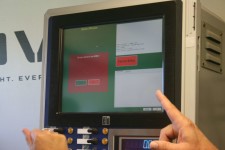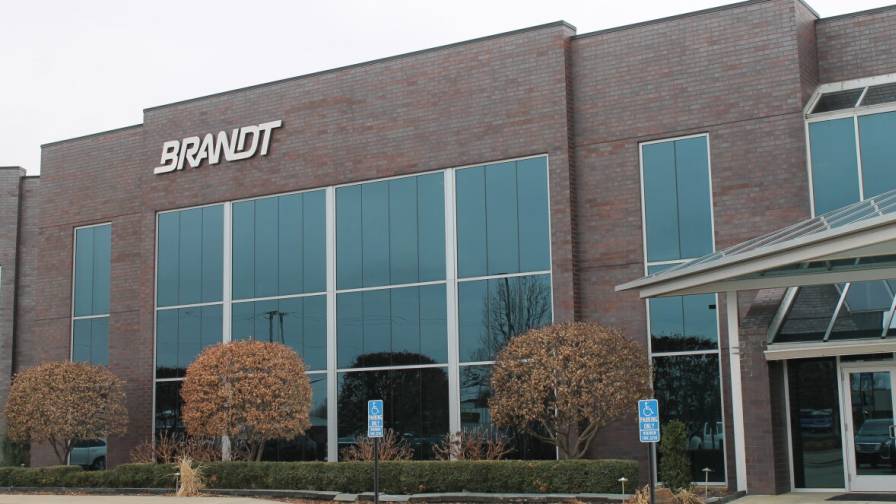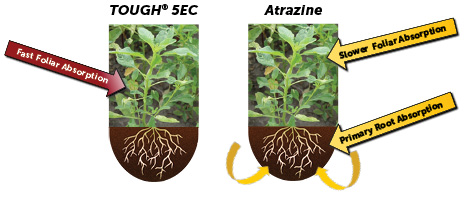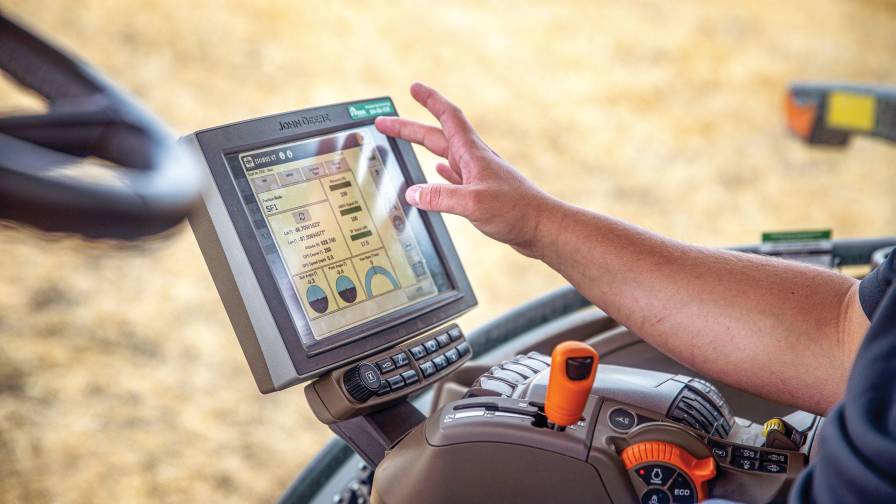Seed Care 2.0

If students of agricultural history know anything, it’s that marketplace innovations happen. When some new area of business opportunity is discovered, the first stage usually involves just getting this money/time-saving idea out to the masses to see if it has any staying power or is merely a passing fad. Once this is determined, the successful ideas invariably get refined as market innovators see new and more efficient ways to make them work, for both seller and buyer.
According to Norm Wagoner, business development specialist for Agrilead, Inc., the seed treatment marketplace is now entering this phase of its history. “We work to be problem solvers,” says Wagoner, speaking about both his business partner Jeff Ochampaugh, business development specialist, and himself. “We’ve made our careers looking at various niches within the agricultural market and trying to solve the problems that may exist there. That’s where our NOVO Seed Treatment Prescription Management System comes into the picture.”
A Growing Market
Few in the industry would argue that seed care is one of the fastest growing new crop protection markets for Midwest agriculture today. In fact, according to the information gathered in the annual CropLife 100 survey of retail organizations, seed treatment has grown from a relative small base in the early 2000s to a triple-digit million-dollar market today. In the 2010 survey, 77% of CropLife 100 ag retailers reported that their year-over-year sales in seed treatment increased between 1% and 10%, leading all other crop inputs and service categories in overall growth.
Two decades ago, seed treatment for soybeans and wheat was mostly limited to hopper box treatments of dry powders and dusts, says Wagoner; the results were generally inconsistent and the methods of application were quite crude. “We have come a long way since the ‘Hopper Box’ era” he says. “We have come from hopper box applications that instructed the user to pour the treatment over the seed and stir it in with an axe handle to a system like NOVO that empowers custom seed treaters to specify delivery of active ingredient on a per-seed-basis.”
“Since that ‘hopper box’ era, our industry has learned a lot about growing more crop,” says Ochampaugh. “We now have improved weed control systems, better genetics, new tillage systems, advanced planting systems, better crop nutrition and the limiting factors have changed; smaller things make bigger differences now than they did 20 years ago and thus the agronomy driven popularity of advanced seed care products and systems.”
As a result, the last 10 years has been filled with significant investment for seed care at the retail level. “It has been almost a frenzy of purchasing seed treaters, bulk seed handling systems, conveyors, tender wagons and all the necessary seed handling assets to service this growing market,” says Ochampaugh. “We like to think of it as a movie we have seen before in the crop protection business dating back to the 1980s, when retailers aggressively invested in sprayers, bulk chemical systems, people and other assets to service custom spraying demand. What came next in that movie? It included the add-on of sophisticated spray monitors, guidance systems, advanced nozzle systems, an explosion of post emergent herbicide products and birth of the spray adjuvant business.”
According to Agrilead, the time is now for the next scene of the “Seed Care” movie. It is time to begin upgrading all the foundational infrastructure investments of the last 10 years with tools, services and products to improve performance on all levels, including agronomic performance, operational efficiency, regulatory compliance and enterprise profitability. It is with this vision that the company developed the NOVO Seed Care Prescription Management System, first introduced in spring 2011.
“We have worked closely with Agrilead in our local markets the past several years,” says Tom Lutgen, president of Star Seed Co., Osborne, KS. “The seed care business of our dealers is growing and we have worked to help them with seed treating equipment and seed care products; we have even explored value-added services to help them mix and manage seed treatment prescriptions with an on-demand pilot project we called ‘Sudden Service,'” says Lutgen. “What Star learned through this process is that customers want and need more, and NOVO is a great way to bring more to the customer and their growers.”
The Sudden Service project with Star Seed was a critical step in the development of NOVO, says Wagoner and Ochampaugh. “This is where we all learned from a treating floor perspective the challenges of managing seed treating prescriptions, the process of mixing and calibrating, the importance of documentation, the costs of mistakes and the value of a better way to get the job done,” says Wagoner. “NOVO was built first from the perspective of the seed care operator, designed to help them do a better job, to be a tool that truly brings solutions and value to the people who get the hard work done every day.”
The NOVO System
Very simply, the NOVO system is a computer automated machine designed to set near the seed treating system. The system allows the operator, using touchscreen operation, to select the next treatment prescription for the seed to be treated and then automates a measuring and transfer process of that prescription to the treater slurry tank. The standard NOVO system is capable for up to four direct product connections from drums or totes, along with a water connection, and an unlimited capacity for hand-added products.
Beyond this functionality, NOVO features include automated documentation of the treatment mix. This can then be used to support billing, archive records for the agronomic file and to comply with regulator recordkeeping requirements.
According to Agrilead, explaining NOVO to others has been one of the biggest challenges with the introduction of the system. “NOVO addresses an unmet need in the industry, but it is difficult for anyone to really understand the value and the functionality of the system without seeing it,” says Ochampaugh. This is why the Agrilead team built a NOVO demonstration trailer that allows prospective customers and other industry associates the chance to experience NOVO hands-on. In the trailer, guests literally get to run the machine through seed care prescription examples of their choice to better understand the multiple value points of the tool. “We have had our demo trailer all over the Midwest introducing NOVO to ag retailers, basic product manufacturers, crop protection distributors and even with EPA contacts to help them learn about how NOVO is a tool to reduce worker and environmental exposure and contribute to the traceability solutions involving food safety,” says Wagoner. “Once a person gets to step in the trailer and run the machine, the lights start turning bright to the value of NOVO.”
Agrilead is quick to recognize industry partners and friends that have helped turn NOVO from vision to reality. “We have been blessed with many people to help us along the way, including some that have tried to help us and couldn’t,” says Wagoner. “We had a very challenging time getting the system built until we finally connected with Junge Control. That’s when things started really happening for our NOVO project.”
Junge Control Inc., Cedar Rapids, IA, is a well-known name in the world of large volume fertilizer and chemical blending systems. The company got its start with prescription blending of suspension fertilizers and specializes in the process of automating a prescription blending process. “We had not considered prescription blending seed treatment products until Agrilead visited one day,” says Matt Miner, Junge product manager. “After our initial visits, we were quite confident we could deliver what Agrilead wanted and together it has been a great project for both of our companies.”
Both Agrilead and Junge agree that neither company could have ever developed NOVO without the other. “With Agrilead’s experience and expertise in the seed care business and our capabilities of customized measuring and automation, we are able to bring the same level of accuracy, prescription capability and management accountability to seed care that our systems have delivered to fertilizer and custom applicators for more than 30 years,” says Dave Junge, president at Junge. “We couldn’t be more excited about this project and to be a part of the Agrilead vision for a better seed care industry.”
Do It Right, Every Time
Hang around Ochampaugh or Wagoner very long and you will probably be asked if you can recall the Nike sports tagline “Just Do It!” They will then quickly let you know that Agrilead believes that much more importantly than “just doing it, is doing it right … every time.”
A problem that has haunted Agrilead ever since it began to aggressively focus on seed care many years ago has been the issue of delivering the correct rate of treatment on a per-seed-basis. This has been especially concerning as industry sales of systemic insecticides and fungicides have grown, products for which performance is impacted by seed dose rather than by dose per 100 pounds of seed, like most seed treatment products are labeled. Accordingly, when seed care operators treat 100 pounds of seed with 3 ounces of product (per label directions), the dose per seed changes dramatically based upon the size of the seed being treated. For example, a soybean seed with 2,800 seeds per pound would be treated on a per-seed-basis at about a 20% higher rate than a soybean seed with 3,500 seeds per pound.
As a result, Agrilead has developed a method for managing seed size issues with crops such as soybean at the retail custom seed treating level. The new patent pending method, SIRA (Size Indexed Rate Adjustment), takes a novel approach to adjusting treating rates based on the size of the seed being treated. The result of this is that in the example of 3 ounces per 100 pounds of seed, rates would be adjusted so that the same rate of active ingredient on a per-seed-basis is delivered to the smaller seeds as well as the larger seeds.
“Once understood, most would agree that the SIRA method is a very simple solution to managing the seed size issue, but is one that is very difficult to do,” says Ochampaugh. “This is why we are very excited about the SIRA capability programmed into NOVO that now provides a simple solution that is much more practical to execute.”
Mid Kansas Coop (MKC) in south central Kansas was the first NOVO operation to commercially execute a SIRA application method when treating soybeans this spring. “We really liked the idea of treating all the seeds the same and our first consideration for using the NOVO/SIRA method was a call to our manufacturer rep to confirm that the Cruiser products we were using were in fact labeled to make the SIRA rate adjustments,” says Fred Seiler, a seed specialist with the company.
After confirming that the CruiserMaxx products it was using did in fact offer a label rate option for treating 140,000 seeds in addition to the standard rate per 100 pounds of seed, all lights were green for the company to move forward with SIRA. “One of the first things we noticed with SIRA was that the treated seed looked better,” says Kent Nichols, another of the company’s four seed specialists. “In fact with SIRA, all the treated seed now looked the same. The bigger and the smaller seed had the same color,”
According to Ochampaugh, the MKC experience is exactly what should be expected when SIRA treating seed on a per-seed-basis. “With SIRA, a 2,800-count seed and a 3,500-count seed will look the same regardless of seed size because all the seeds were treated with the same dose,” he says. “With conventional treatment methods, the seed size changes but the rate per 100 pounds stays the same. This is why the bigger seeds looked treated better and the smaller seeds were lighter color and not treated as good. With SIRA, the seed size still changes but the rate per 100 pounds of seed changes accordingly, resulting in an equalized amount of treat per seed.”
Comments From The Field
Agrilead introduced the NOVO system to ag retailers at pilot locations this past spring. Several different types of retail operations with different brands and types of treating systems stepped forward to invest in a NOVO system for their operation. Some of the companies involved included Helena Chemical Co., CHS Inc. and two independent Pioneer dealers.
Thus far, the feedback from users has been positive. “I really like how easy it makes everything about the seed treatment process go,” says Cody Bernhard, seed warehouse manager for Helena Chemical in Adair, IA, which was the first ag retailer to install the NOVO system. “We’ve been offering seed treatment to our growers since 2005 and we used to have to measure everything out by hand using big jugs. But now, with NOVO, everything is automated and in a closed system, so there’s no mess. Besides speeding up the seed treatment process, this has also improved our inventory control and recordkeeping abilities when it comes to seed treatment for our customers.”
Over at MKC, the experience with the NOVO system has been similar. “I really like the accuracy of seed treatment we get using NOVO,” says Seiler. “That’s been a big help, especially with as busy as we were with other application and service needs this past spring.”
“We are really excited to have sold some of the first NOVO systems for Agrilead to pilot locations in our Kansas dealer market and look forward to helping more dealers next spring as the word is spreading about this new tool in the industry,” says Star Seed’s Lutgen. “We also believe the system has a great fit for smaller to mid-sized independent seed companies like ours and we will be helping Agrilead introduce and position the system to help those kinds of companies also.”






